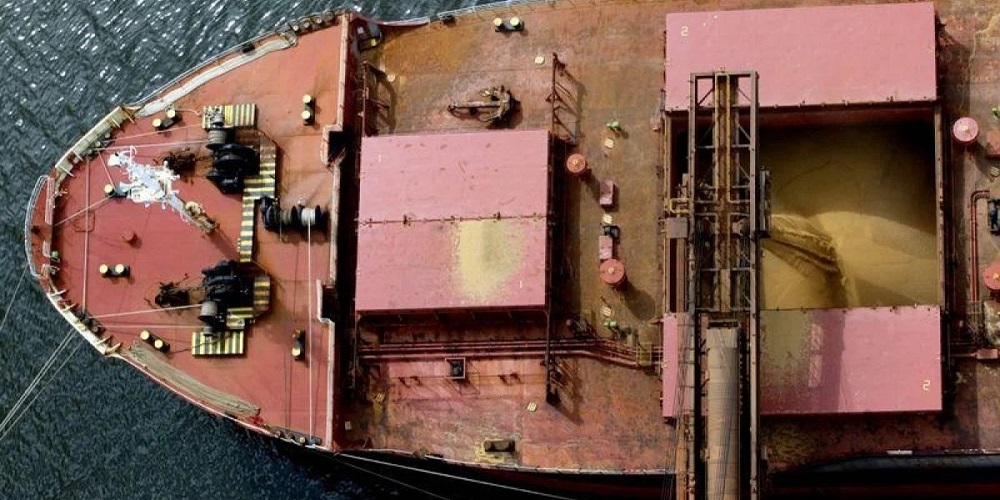RIO DE JANEIRO, BRAZIL – The Getúlio Vargas Foundation’s (FGV) Foreign Trade Index (Icomex) data for September reinforced a long-standing trend: the increased share of commodities in Brazil’s exports. In the month, 69.7% of all exports were of commodity-related products.
The value was the highest since records began in 1998, with soy, oil and iron ore accounting for over 40% of exports. According to experts, the scenario reflects a rising global demand and benefits Brazil.

However, it also poses challenges. The first is to address the growing loss of share of the manufacturing industry. Moreover, environmental issues and a dependence on China, a major commodities importer, are risks to the Brazilian economy.
THE PATH TO 70%
The increase of commodities in Brazil’s exports is linked to both short and long term factors. Considering only 2021, the economic rebound after the pandemic led to a large increase in demand for these products.
“There is a global growth in demand, and it is always ahead of supply. The production of soy, for instance, grew in Brazil, but also in Canada, United States, Russia, precisely due to global demand,” says Brazilian Agribusiness Association (ABAG) chairman Marcello Brito.
Iron ore, another major commodity on Brazil’s export list, also reflected this demand. According to Brazilian Mining Institute (Ibram) director-president Flávio Penido, ore exports are now 110% higher than in the same period in 2020, totaling US$36.5 billion through September 30.
“China attracts 60% of our ore exports, and it was affected by the pandemic at first, reduced steel production, which reduced ore imports and the price dropped,” he says.
However, when the country implemented measures to contain the pandemic and boost the economy, the scenario changed, with construction growing, the demand for ore rising and the price increasing.
China stopped several steel production furnaces as part of its pollution reduction policies. As a result, demand fell and prices have been adjusted. From a peak of US$220 per ton, the average price in 2021 is expected to stand at US$160.
“The demand, be it for any product, must be met by the market, you can’t keep products, not offer them to the market, you have to generate employment, tax. Economic activity makes the economy turn. This applies to any commodity, we have to meet the demand,” Penido says.
Considering a longer period, China was also a key factor for this commodity growth. “It has been increasing its exports since the 1990s, demanding ores, proteins, soybeans, and this had a favorable impact on Brazil in terms of supply,” says FEA-USP professor Dante Mendes Aldrighi.
FEA-RP-USP professor Luciano Nakabashi says that technological development was also important for the growth of agribusiness in Brazil, particularly in the Midwest. “It was quite a significant expansion, which involved planting especially soy in regions where it was previously impossible.”
The professor recalls that Brazil is also a country with plenty of land and natural resources, which has also become a competitive advantage.
OPPORTUNITIES
The growth in the share of commodities in exports is linked to Brazil’s trade surpluses, i.e., the country exports more than it imports. Iron ore, for one, accounts for almost 50% of the surplus, according to Ibram.
“It is important to export in order to generate foreign exchange, there is a trend for the global economy to expand, particularly in commercial relations between countries. If we export more, thinking about global chains, the more we integrate ourselves in them, and specialize in parts of them,” Nakabashi says.
According to the professor, the scenario also allows more imports of machinery for industry, for instance, and increases the availability of products for the population. Thus, the country can offset the lack of specialization in certain areas.
Another advantage is that, when a product is exported, the exporter returns the sale value to Brazil, and is then taxed. In other words, a higher trade surplus means higher tax revenues.
Aldrighi believes that the government could design investment and development policies based on this higher revenue, and investing in areas such as education and infrastructure, but this is not always the case.
“It is important to export because if the economy is based on exports, it becomes less dependent on the domestic economy, it can expand production based on global demand. Brazil is self-driven, so growth depends more on the income of Brazilians. The weight of exports is low, around 15% of GDP,” he says.
With information from CNN Brasil

